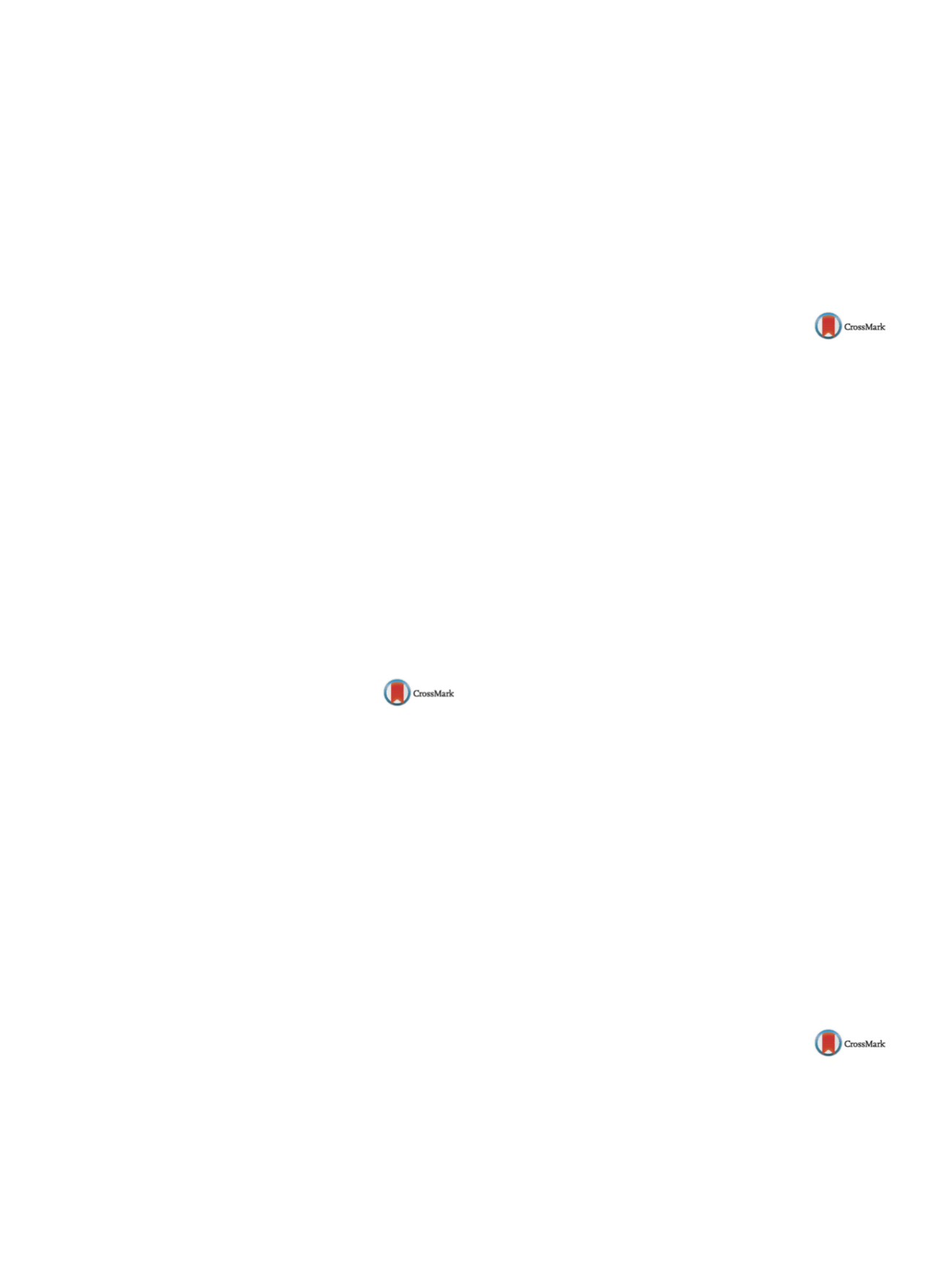

S208
25th European Congress of Psychiatry / European Psychiatry 41S (2017) S170–S237
Introduction
Mania is challenging to treat. Typical antipsychotics
may bemore efficient comparedwith atypical antipsychotics, how-
ever, with unfavourable side effects.
Objectives
To help the clinician choose between typical and atyp-
ical antipsychotics.
Aims
To investigate the correlation between change in severity of
mania and the corresponding day to day use of typical and atypical
antipsychotics.
Methods
This retrospective case record study included patients
admitted with mania (International Classification of Diseases 10th
revision code F30, F31.0, F31.1, F31.2 or F31.6) at the Depart-
ment of Affective Disorders, Aarhus University Hospital, Denmark,
between January 2013, and December 2015. The dose of typical
and atypical antipsychotics was standardized as defined daily dose
according to theWorldHealthOrganization’s guidelines. The sever-
ity of mania was measured daily with the Modified Bech-Rafaelsen
Mania Scale (MAS-M), a validated, nurse administered scale (MAS-
M). We applied a linear regression in a mixed model approach to
compare the Mas-M score over time under the influence of typi-
cal and atypical antipsychotics, respectively, adjusted for baseline
characteristics.
Results
We included 43 patients. Patients receiving typical
antipsychotics had more recent hospital admissions, a higher
dosage antipsychotics and more constraint. The baseline MAS-M
score was higher in patients receiving typical antipsychotics. The
daily change in MAS-M score was–0.25 for typical antipsychotics
and–0.23 for atypical antipsychotics with a difference of 0.02 (95%
CI 0.008–0.039).
Conclusions
The rate of improvement of mania may be indepen-
dent of baseline illness or type of antipsychotic medication. This
may be confounded by indication.
Disclosure of interest
The authors have not supplied their decla-
ration of competing interest.
http://dx.doi.org/10.1016/j.eurpsy.2017.01.2169EW0300
Neuropsychological differences
between bipolar and borderline
personality disorder patients
I. Michopoulos
1 ,∗
, K. Tournikioti
1, R. Gournellis
1, P. Ferentinos
1,
K. Vassilopoulou
1, A. Karavia
1, M. Papadopoulou
2, A. Douzenis
11
National and Kapodistrian University of Athens, Medical School,
2nd Department of Psychiatry, “Attikon” Hospital, Athens, Greece
2
Ygeias Melathron” Hospital, Department of Neurology, Athens,
Greece
∗
Corresponding author.
Introduction
There is a continuing debate about the differences
and similarities between bipolar disorder (BD) and borderline per-
sonality disorder (BPD).
Objectives
Only few studies have focused on the neuropsycholo-
gical profile of these two disorders.
Aims
We studied the differences on memory, executive function
and inhibitory control between BD and BPD patients.
Methods
Twenty-nine patients with BD in euthymia, 27 patients
with BPD and 22 healthy controls matched for age and education
were included in the study. All of them were female. BD patients
who could also be diagnosed with BPD were excluded from the
study. Participants were administered a series of tests from the
Cambridge Neuropsychological Test Automated Battery (CANTAB),
accessing memory, executive function and inhibitory control.
Results
BD and BPD patients performed worse than controls in
general. Significant differences were found in the PAL test; BD
patients had 46.71, BPD patients had 36.56 and controls had 15.77
errors (
P
= 0.004). BPD patients performed worse in the IE/ED set-
shifting test; they made 48.16 errors while BD patients made 23.64
and controls 16.14 (
P
= 0.001). BPD patients performed better in the
problem-solving task (SOC), they solved 10.0, BD patients 6.32 and
controls 8.32 problems (
P
< 0.001).
BD and BPD patients had similar performance in the SST inhibition
task but worse than controls (
P
= 0.03).
Conclusions
BD and BPD seem to have differences in neuro-
psychological performance. BD patients show more deficits in
memory learning and problem solving while BPD patients show
more deficits in set shifting.
Disclosure of interest
The authors have not supplied their decla-
ration of competing interest.
http://dx.doi.org/10.1016/j.eurpsy.2017.01.2170EW0301
Could soluble intercellular adhesion
molecule-1 be associated with state
affective symptomatology in healthy
adults?
M. Pantovic
1 ,∗
, B. Dunjic Kostic
1, N. Petronijevic
2,
M. Velimirovic
2, T. Nikolic
2, V. Jurisic
3, M. Lackovic
1, S. Totic
1,
A. Jovanovic
1, A. Damjanovic
1, M. Ivkovic
11
Clinic for Psychiatry Clinical Centre of Serbia, Department for
Affective Disorders, Belgrade, Serbia
2
School of Medicine, Institute of Medical Biochemistry, Belgrade,
Serbia
3
School of Medicine, Department of Pathophysiology, Kragujevac,
Serbia
∗
Corresponding author.
Introduction
Immune parameters are frequently associated with
mood disorders and affective temperaments. In our study, we
investigate the role of soluble intercellular adhesion molecule-
1 (sICAM-1) in affective temperaments and mood symptoms in
healthy adults.
Methods
Healthy adults were screened for psychiatric disor-
ders using the non-patient version of the Structured Clinical
Interview for DSM-IV-I and II. Affective temperaments were eval-
uated with Temperament Evaluation of Memphis, Pisa, Paris and
San Diego-Autoquestionnaire (TEMPS-A). State mood symptoms
were assessed using the Young Mania Rating Scale (YMRS) and
Montgomery-Åsberg Depression Rating Scale (MADRS). Serum
sICAM-1 levels were measured using enzyme-linked immunosor-
bent assay.
Results
We identified no association between sICAM-1 levels and
affective temperament scores. We identified correlation between
sICAM-1 levels and manic symptoms measured by YMRS. Further-
more, sICAM-1 was a significant predictor of manic symptoms in a
linear regression model with age, gender, BMI and smoking habits
as confounding variables.
Conclusions
Our findings suggest that sICAM-1 could be a rele-
vant immune factor for severity of state affective symptoms and
could contribute to better understanding of complexity of affective
disorders.
Disclosure of interest
The authors have not supplied their decla-
ration of competing interest.
http://dx.doi.org/10.1016/j.eurpsy.2017.01.2171EW0302
The association between school
achievement and subsequent
development of bipolar disorder
S.D. Pedersen
1 ,∗
, L. Petersen
2, O. Mors
1, S.D. Østergaard
11
Aarhus University Hospital, Department of Clinical Medicine-
Psychosis Research Unit, Risskov, Denmark
2
National Centre for Register-based Research, Department of
Economics and Business Economics, Aarhus BSS, Aarhus, Denmark
∗
Corresponding author.


















